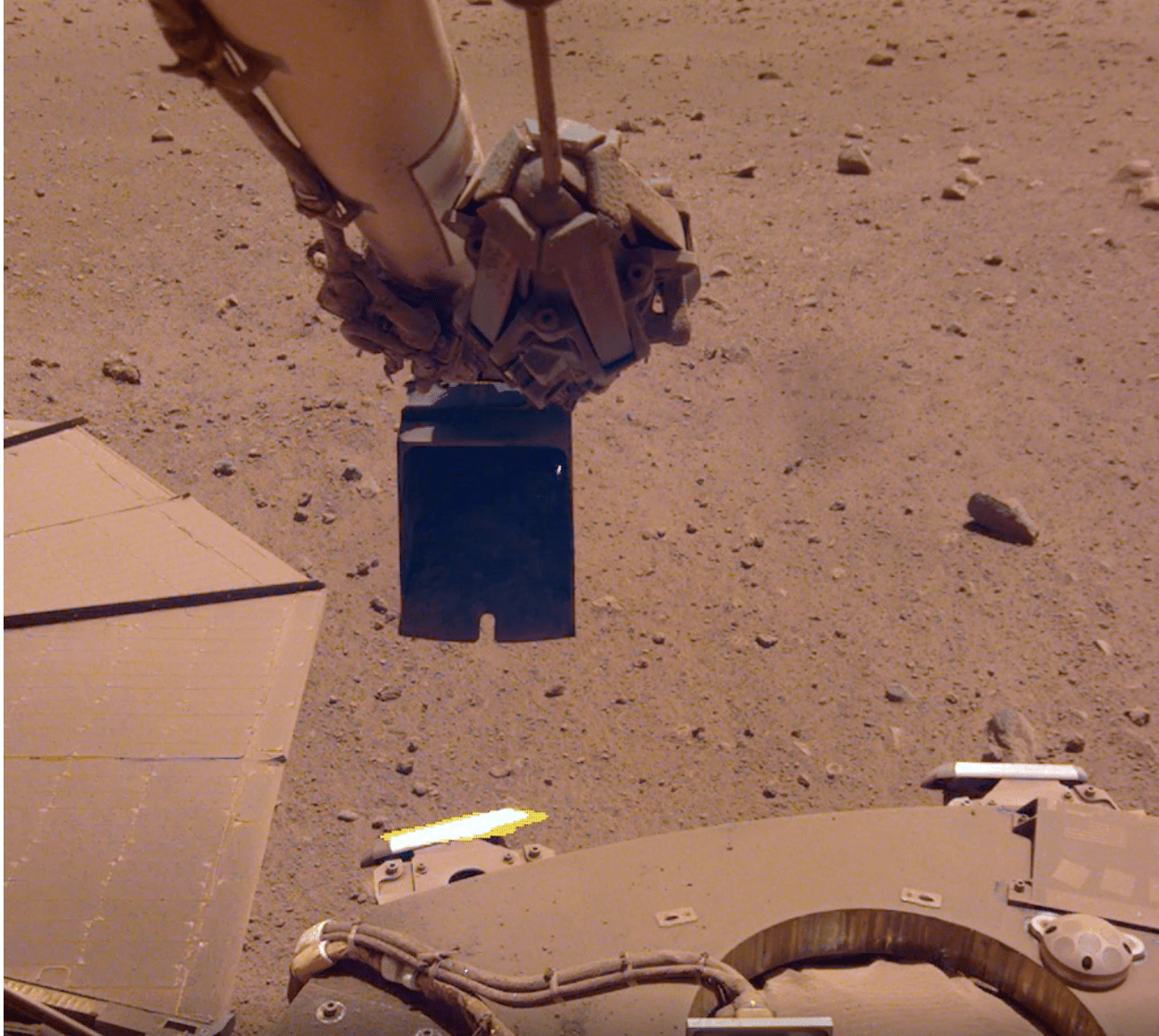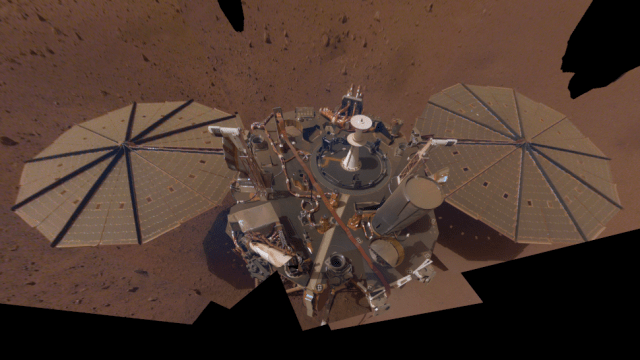Dwindling access to power, the result of dust settling onto solar panels, is threatening to end NASA’s InSight Mars mission by April of next year.
News of InSight’s worrisome condition was announced on June 21 at a meeting of NASA’s Mars Exploration Program Analysis Group, as SpaceNews reports. The steady buildup of dust on the probe’s solar arrays has been “considerable,” as Bruce Banerdt, principal investigator for the InSight mission at NASA’s Jet Propulsion Laboratory, explained during the meeting.
With the nearest duster some 222 million miles away, the Martian regolith has been able to accumulate unchecked. Banerdt said 80% of of the lander’s array surfaces are now blocked from the Sun, dropping the amount of available daily energy to less than 700 watt-hours, as opposed to the nearly 5,000 watt-hours that were available when InSight landed at Elysium Planitia in November 2018. It’s a situation that’s only getting worse, and things could come to a grinding halt during the first quarter of 2022, he added.
That the InSight mission might soon be over is sad news but not altogether unexpected. The mission was designed to last for a full Martian year, or 687 Earth days, and the steady decline in energy was expected, according to SpaceNews. Earlier this year, NASA extended the mission to December 2022, with an emphasis on the monitoring of seismic activity. During the primary phase of the mission, InSight collected data about the Martian atmosphere and magnetic field, in addition to detecting marsquakes. The lander’s Heat Probe and Physical Properties instrument (HP3) is another story, as the “mole” was never able to penetrate deeply into the Martian surface and was ultimately abandoned as a scientific project in January of this year.
NASA had hoped for “cleaning events,” in which fortuitous gusts of wind might blow some dust off the arrays. They did not. The team tried to shake some dust off by activating motors used to deploy the panels, but that didn’t work.

They eventually came up with a creative, albeit counterintuitive, solution. InSight’s robotic arm was used to sprinkle Martian sand near, but not directly above, the dust-covered panels. The team thought “it might be possible to strike dust on the panels with sand grains that would ‘saltate,’ or hop off the solar panel surface and skip through the air in the wind” and that the “larger grains might then carry off the smaller dust particles in the wind,” according to NASA. This was done on May 22, 2021, and worked to a small degree: The technique resulted in a gain of about 30-watt hours of energy per Martian day. At the June 21 meeting, Banerdt said subsequent attempts at saltation offered a slight energy increase and a “little bit of headroom that we didn’t have before,” as SpaceNews reported.
A clever short-term fix, but likely not a long-term solution. Making matters worse, Mars is heading into its aphelion, when the planet will be at its farthest point from the Sun along its orbital path. This will happen two months from now, during which time InSight will have limited access to sunlight.
The mission is designed such that the lander can function without its science instruments during this temporary interval. During the aphelion phase, which will last until late October, InSight will reserve power for its heaters, computers, and other critical components, while keeping its seismometer active. At the same time, NASA will refrain from transmitting commands to the stationary lander. Banerdt said there could be “a month or two of time where we might have to turn off the seismometer, but we’re trying to tighten our belts and sharpen our pencils to see whether we can operate straight through.”
Grimly, the situation won’t improve much after the aphelion, as Banerdt expects more dust to fall onto the arrays. Eventually, he expects power to fall below survivable levels, an event he predicts for April 2022. Should the lander fail to get a “significant increase” in solar array output, “we’re likely to end our mission sometime around that time next year,” Banerdt said.
We’ve seen this show before. NASA’s Opportunity rover stopped transmitting messages on June 10, 2018 and was officially declared dead on February 13, 2019. A global dust storm was blamed for the rover’s end. But it’s important that we not get too ahead of ourselves here, as InSight has not yet relinquished its mortal coil. This lander, we are hoping, will not go gently into that good Martian night.
